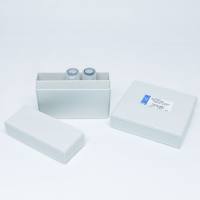Localized Inflammatory Irritation of the Lumbar Ganglia: An Animal Model of Chemogenic Low Back Pain and Radiculopathy
互联网
585
In this chapter, we describe a newly developed rodent model of chemogenic pain involving the inflammation of one or two lumbar sensory ganglia using the immune activator, zymosan. Using this model, we have investigated cellular, molecular, and ionic mechanisms of inflammatory responses within the dorsal root ganglion (DRG) and their contribution to the development of chemogenic pathological pain. DRG inflammation was induced by a single deposit of zymosan in the epidural space near the L5 DRG via a small hole drilled through the transverse process. After a single zymosan injection, rats developed bilateral mechanical hyperalgesia and allodynia which began by day 1 after surgery, peaked at days 3–7, and lasted up to 28 days. Robust satellite glial activation was observed in inflamed ganglia. Cytokine profile analysis using a multiplexing protein array system showed that local inflammatory irritation selectively increased proinflammatory cytokines/chemokines such as IL-1β, IL-6, IL-18, MCP-1, and GRO/KC up to 17-fold, and decreased anti-inflammatory cytokines such as IL-2 and IL-12 (p70) up to threefold. Inflaming the DRG also remarkably increased the incidence of spontaneous activity of A- and C-fibers recorded in the dorsal root. Many of the spontaneously active A-fibers exhibited a short-bursting discharge pattern. Changes in cytokines and spontaneous activity correlated with the time course of pain behaviors, especially light stroke-evoked tactile allodynia. Local inflammation induced extensive sprouting of sympathetic fibers, extending from vascular processes within the inflamed DRG. Finally, patch clamp recording of the acutely dissociated DRG neurons revealed a significant upregulation of sodium and potassium channels. These results demonstrate the feasibility of inducing chronic localized inflammatory responses in the DRG in the absence of traumatic nerve damage and highlight the possible contribution of several inflammatory cytokines/chemokines to the generation of spontaneous activity and the development and persistence of chemogenic pathologic pain.









